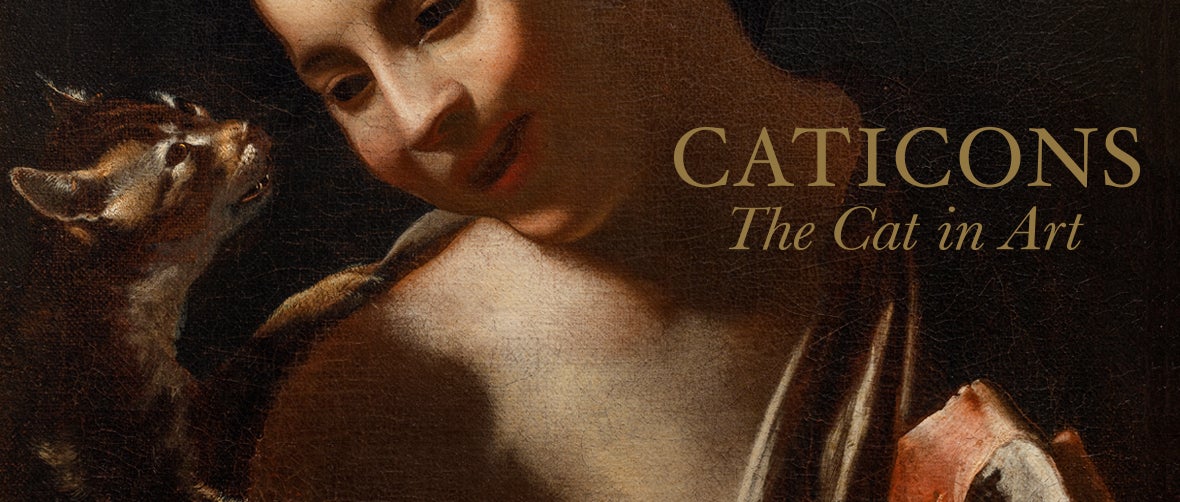Caticons: The Cat in Art

Caticons: The Cat in Art
![]() Cats have charmed people with their mysterious allure for thousands of years. As adept hunters, many domestic cats are self-sufficient creatures with characteristically nonchalant, independent personalities. Cats were venerated by the ancient Egyptians and celebrated as symbols of good luck throughout Asia. In Europe, cats became associated with magic, witchcraft, and evil spirits and were persecuted for centuries before they gained cultural acceptance. Today, there are an estimated 600 million domesticated cats worldwide, making them the most popular contemporary pets.
Cats have charmed people with their mysterious allure for thousands of years. As adept hunters, many domestic cats are self-sufficient creatures with characteristically nonchalant, independent personalities. Cats were venerated by the ancient Egyptians and celebrated as symbols of good luck throughout Asia. In Europe, cats became associated with magic, witchcraft, and evil spirits and were persecuted for centuries before they gained cultural acceptance. Today, there are an estimated 600 million domesticated cats worldwide, making them the most popular contemporary pets.
Modern domestic cats descended from small, African wildcats that were attracted by birds and other animals found in farmlands along the Nile River around 4,000 years ago. Realizing their potential as pest controllers, ancient Egyptians enticed cats into their homes with pieces of bread soaked in milk. Felines evolved into domesticated companions, and in Egypt, some cats were elevated to the stature of gods. The sun god Ra took the form of a cat, while the warrior goddess Sekhmet was portrayed with a female body and a lion’s head. Bastet, a more peaceful Egyptian deity, first appeared as a cat-headed woman and was depicted as a domestic cat by 900 BCE.
Following the conquest of Egypt by Alexander the Great (356–323 BCE), domesticated cats made their way to the Greek and Roman empires. Around this time, cats migrated on Mediterranean trade routes to Asia, where they were prized for their abilities to catch rodents and to safeguard silk cocoons from pests. Arab folk tales recount the great affinity for cats held by the prophet Muhammed (c. 570–632). In China and Japan, felines were historically seen as spirit guardians ![]() and symbols of prosperity, and Buddhist and Shinto temples welcomed cats to aid daily meditation.
and symbols of prosperity, and Buddhist and Shinto temples welcomed cats to aid daily meditation.
Although cats were officially condemned in Medieval Europe, they were praised by painters, sculptors, and intellectuals during the Renaissance, and Leonardo da Vinci (1452-1519) proclaimed that “even the smallest feline is a masterpiece.” Exotic breeds including Angoras and Persians became sought-after pets, and by the mid-19th century, the cat’s popularity in the west was assured. This exhibition explores the history of the cat and its allure through art, literature, and decorative arts from around the world.
A very special thank you to Sandy Lerner for making this exhibition possible.
©2018 by San Francisco Airport Commission. All rights reserved.